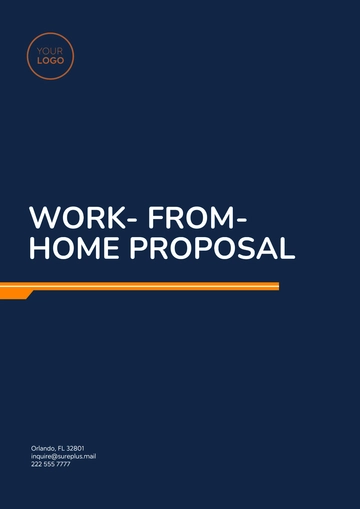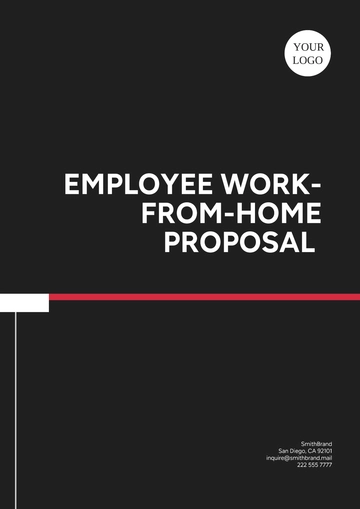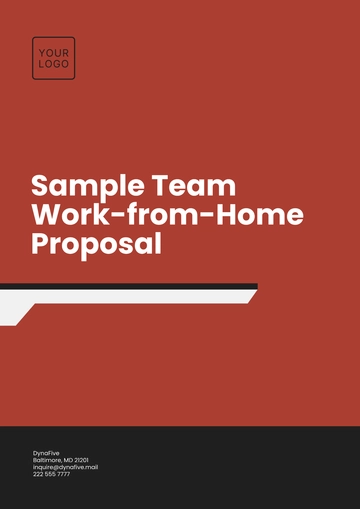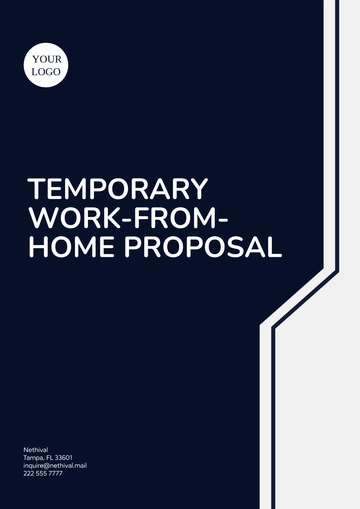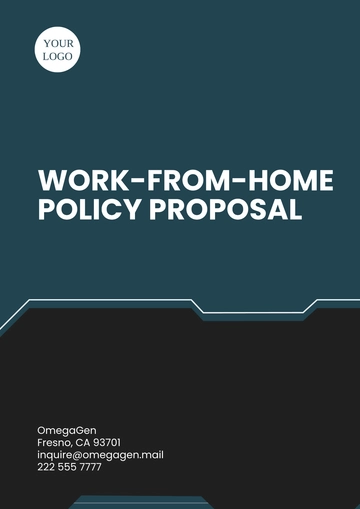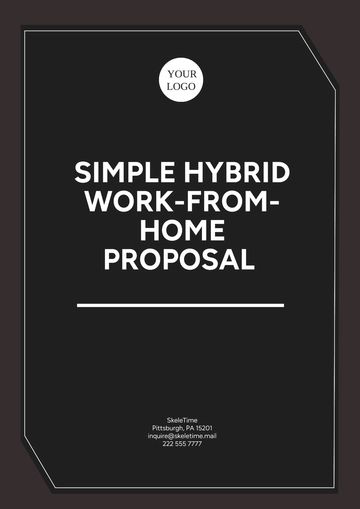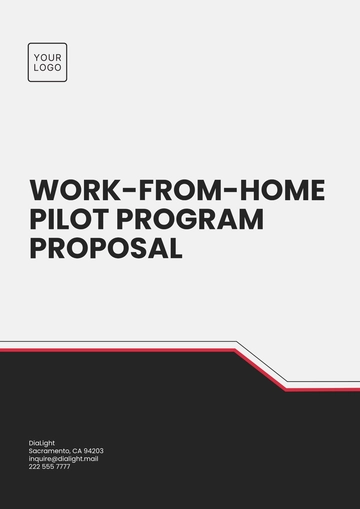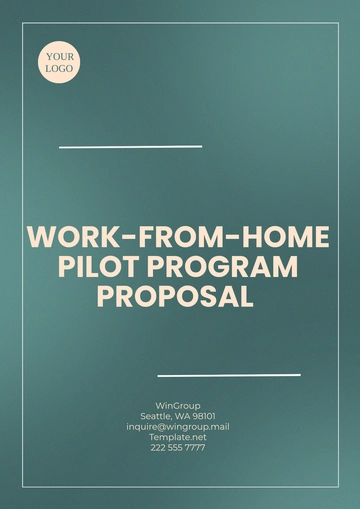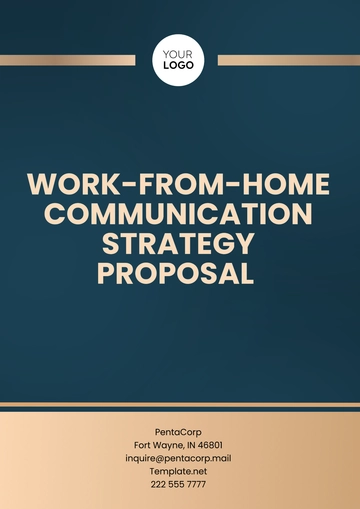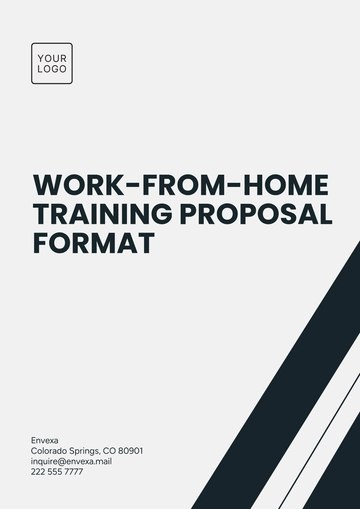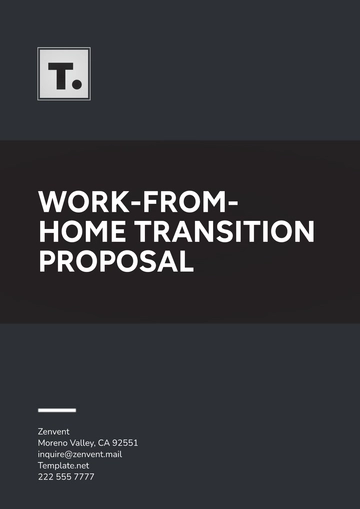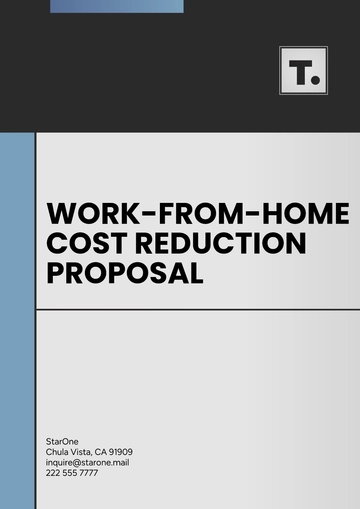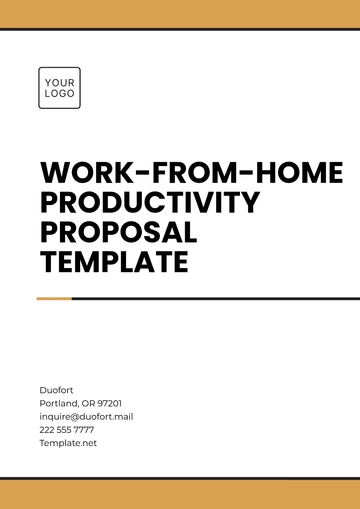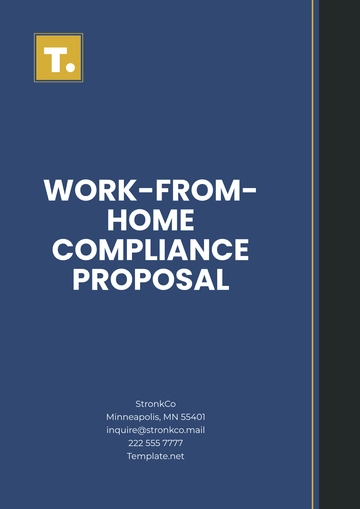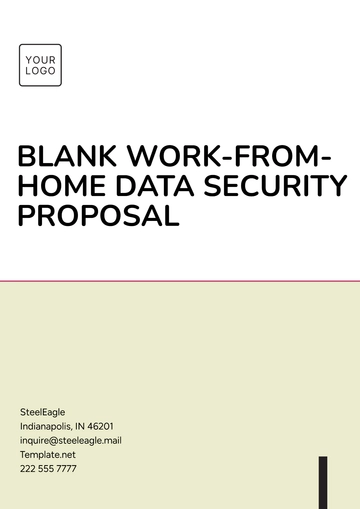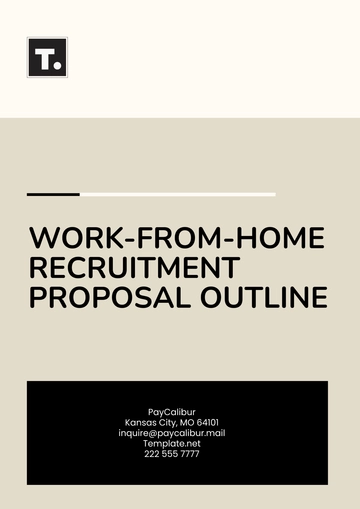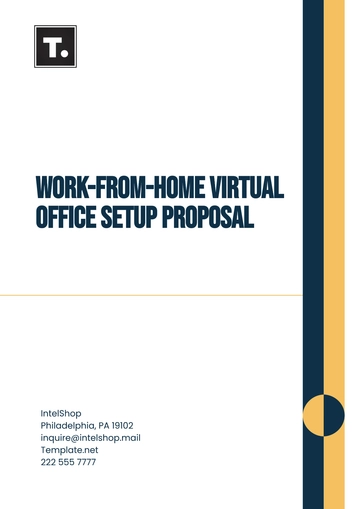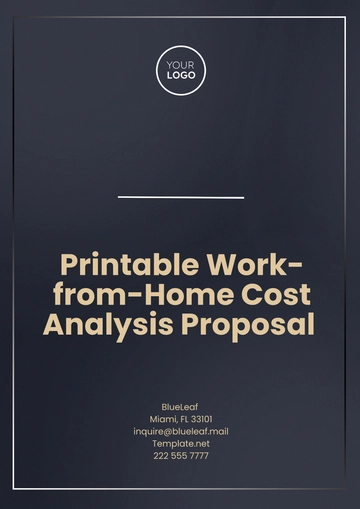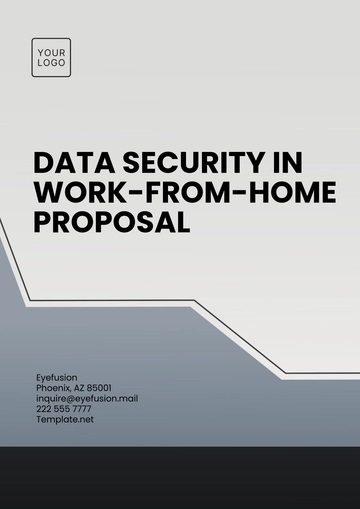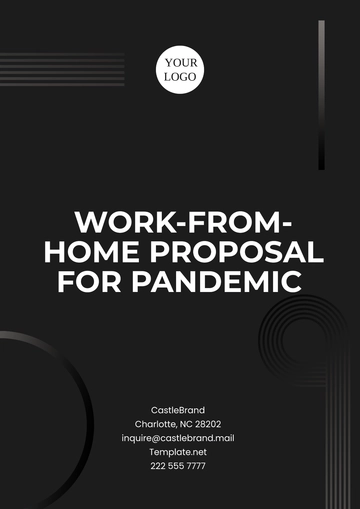Work-from-Home Communication Strategy Proposal
May 10, 2090
[Your Company Name]
1. Introduction
In light of the ongoing changes to work environments, this proposal outlines a comprehensive communication strategy to enhance productivity, engagement, and clarity for employees working from home. Effective communication is essential to maintaining organizational cohesion and ensuring team collaboration despite physical distance.
2. Objective
The goal of this communication strategy is to:
Foster seamless communication between remote teams.
Promote consistent collaboration across various time zones.
Ensure that employees have access to the resources, tools, and support they need to stay connected.
Provide clear guidelines for virtual meetings, messaging, and other communication tools.
3. Key Communication Goals
Consistency: Ensure regular updates and team communication to keep employees informed and engaged.
Transparency: Foster an environment of open communication and feedback.
Collaboration: Promote teamwork and the sharing of ideas, resources, and information in real-time.
Efficiency: Optimize communication channels to avoid overload and improve decision-making speed.
4. Communication Channels
To maintain clear and efficient communication, the following channels will be utilized
Email: For formal communication, updates, and document sharing.
Instant Messaging (e.g., Slack, Teams): For quick, informal communication and team discussions.
Video Conferencing (e.g., Zoom, Microsoft Teams): For virtual meetings, one-on-one discussions, and team check-ins.
Project Management Tools (e.g., Asana, Trello, Monday.com): For tracking tasks, milestones, and deadlines.
Document Sharing Platforms (e.g., Google Drive, Dropbox): For collaborative document editing and sharing.
5. Communication Guidelines
Meeting Frequency: Define the frequency of meetings (e.g., daily standups, weekly team meetings, monthly reviews).
Response Time Expectations: Establish reasonable timeframes for email, instant messaging, and other communication responses.
Availability Hours: Clearly communicate core working hours or availability expectations, especially across different time zones.
Use of Video: Encourage the use of video during meetings to promote engagement and connection.
Status Updates: Encourage daily or weekly updates via messaging platforms or project management tools to ensure team alignment.
6. Tools and Technologies
Communication Tools: Platforms like Slack, Zoom, Microsoft Teams, or Google Meet.
File Sharing: Google Drive, OneDrive, or Dropbox.
Project Management: Asana, Trello, or Monday.com for task management and project tracking.
Time Tracking Tools: Time Doctor, Clockify, or Toggl to ensure accountability and track hours worked.
7. Team Collaboration Best Practices
Virtual Coffee Breaks: Encourage informal interactions through virtual coffee breaks to foster team bonding.
Scheduled Check-ins: Implement regular one-on-one check-ins between managers and team members for support and feedback.
Task Allocation: Ensure clear task assignment and follow-up to avoid ambiguity and improve workflow.
Feedback Mechanism: Create a structured process for providing and receiving feedback in a constructive and positive manner.
8. Challenges & Solutions
Challenge: Managing time zone differences.
Challenge: Communication overload.
Challenge: Maintaining team engagement.
9. Implementation Plan
Phase 1: Assessment of current communication tools and practices.
Phase 2: Set up and train employees on the selected tools and guidelines.
Phase 3: Trial period to identify and address any issues.
Phase 4: Review and refine the communication strategy based on employee feedback and performance metrics.
10. Conclusion
This communication strategy aims to provide a clear framework for remote communication that enhances collaboration, engagement, and productivity for all employees. By utilizing the right tools and establishing consistent practices, we can ensure that the transition to a remote work environment is smooth and effective.
Approval:
 [Your Name]
[Your Name]
Proposal Templates @ Template.net
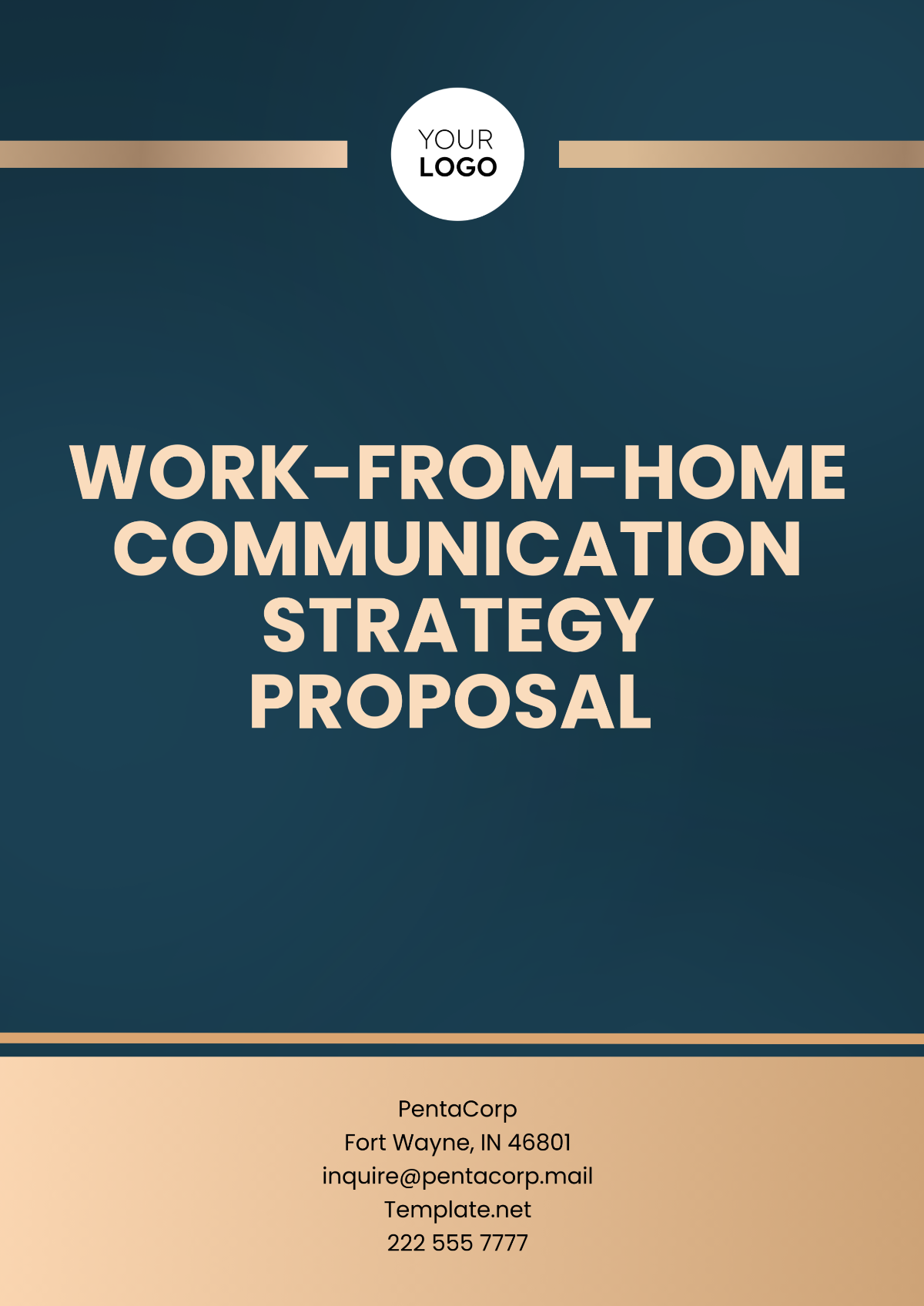
 [Your Name]
[Your Name]